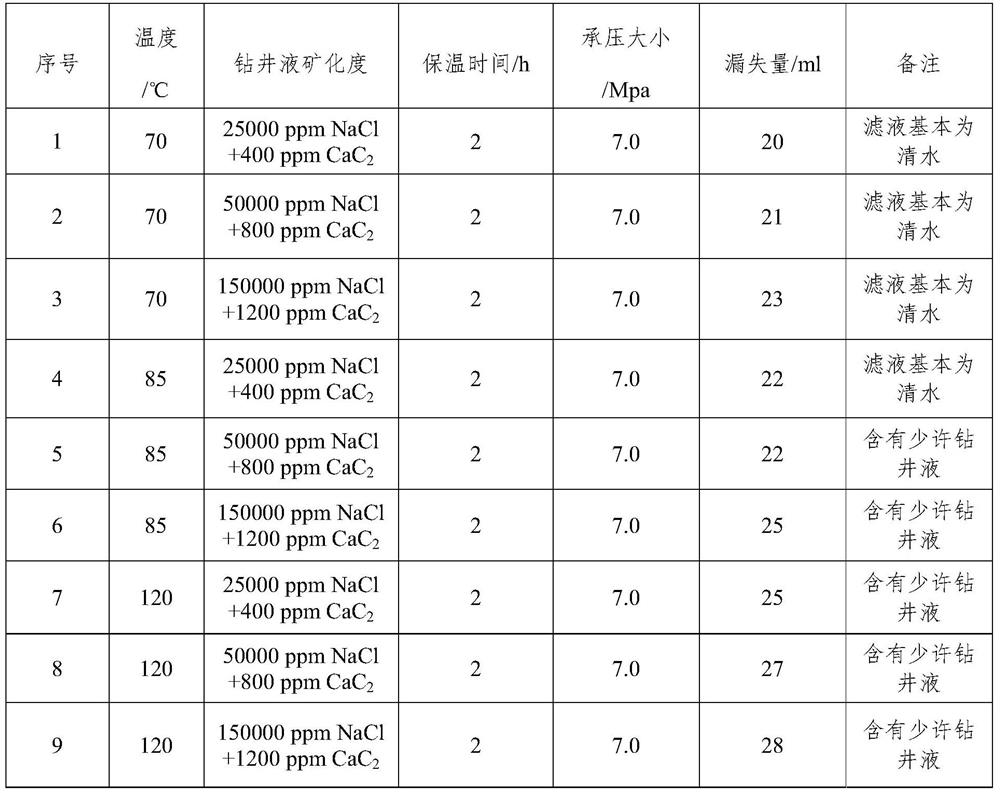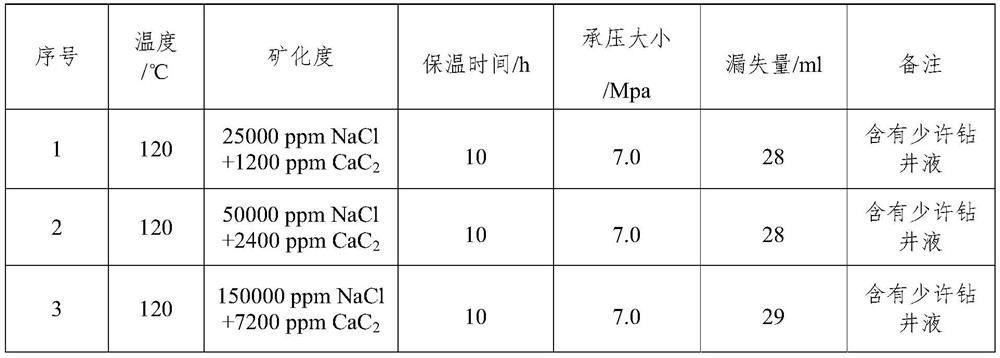Carbon-based tackifier and its preparation method and application
A tackifier, carbon-based technology, applied in chemical instruments and methods, carbon compounds, inorganic chemistry, etc., can solve the problems of affecting the blocking status, reducing the concentration, weak inorganic salt effect, etc., to achieve high blocking ability and stability. The effect of high stability, simple process and simple synthesis path
- Summary
- Abstract
- Description
- Claims
- Application Information
AI Technical Summary
Problems solved by technology
Method used
Image
Examples
Embodiment 1
[0064] (1) Preparation of dispersion II (A) containing carbon-based tackifier
[0065] (1) Take 1g of graphene oxide (GO) and disperse it in 1L of deionized water, and then use ultrasonic shearing (30kHz) to treat it for 2h to obtain GO nano-dispersion (particle size distribution is 50-300nm, average particle size is 200nm), That is, the dispersion liquid I containing graphene oxide;
[0066] (2) Weigh 0.2g of acrylamide, 0.002g of potassium persulfate and 0.05g of phenoxyethyl acrylate into 200ml of dispersion I in (1), and use magnetic stirring (350rpm / min, 10min) to make the three fully Dissolve and mix evenly to obtain a mixture;
[0067] (3) The mixture in (2) was transferred to a 500mL round bottom flask, and the beaker was filled with nitrogen and deoxygenated using an inflator, and then the round bottom flask was sealed with a rubber stopper;
[0068] (4) Under the conditions of magnetic stirring (350rpm) and constant temperature of 70°C, react the liquid in the roun...
Embodiment 2
[0077] The difference from Example 1 is that
[0078] (1) During the preparation process of dispersion II (A) containing carbon-based tackifier:
[0079] Replace "1g graphene oxide" with "0.5g graphene oxide";
[0080] Replace "0.2 g acrylamide and 0.002 g potassium persulfate and 0.05 g phenoxyethyl acrylate" with "0.1 g acrylamide and 0.0015 g potassium persulfate and 0.06 g phenoxyethyl acrylate";
[0081] Replace "under constant temperature conditions of 70°C, react the liquid in the round-bottom flask for 3 hours" with "under constant temperature conditions of 60°C, react the liquid in the round-bottom flask for 4 hours";
[0082] "The concentration of the carbon-based tackifier in the product dispersion is 1 mg / mL" is replaced by "the concentration of the carbon-based tackifier in the product dispersion is 0.5 mg / mL";
[0083] (2) During the preparation of the solution (B) containing hydrophobically associated polymers
[0084] Replace "the concentration of polyacryla...
Embodiment 3
[0089] The difference from Example 1 is that
[0090] (1) During the preparation process of dispersion II (A) containing carbon-based tackifier:
[0091] Replace "1g graphene oxide" with "2g graphene oxide";
[0092] Replace "0.2 g acrylamide and 0.002 g potassium persulfate and 0.05 g phenoxyethyl acrylate" with "0.3 g acrylamide and 0.003 g potassium persulfate and 0.04 g phenoxyethyl acrylate";
[0093] Replace "under constant temperature conditions of 70°C, react the liquid in the round bottom flask for 3h" with "under constant temperature conditions of 80°C, react the liquid in the round bottom flask for 2h";
[0094] "The concentration of the carbon-based tackifier in the product dispersion is 1 mg / mL" is replaced by "the concentration of the carbon-based tackifier in the product dispersion is 2 mg / mL";
[0095] (2) During the preparation of the solution (B) containing hydrophobically associated polymers
[0096] Replace "the concentration of polyacrylamide in the sol...
PUM
| Property | Measurement | Unit |
|---|---|---|
| viscosity | aaaaa | aaaaa |
| concentration | aaaaa | aaaaa |
| viscosity | aaaaa | aaaaa |
Abstract
Description
Claims
Application Information
 Login to View More
Login to View More - R&D
- Intellectual Property
- Life Sciences
- Materials
- Tech Scout
- Unparalleled Data Quality
- Higher Quality Content
- 60% Fewer Hallucinations
Browse by: Latest US Patents, China's latest patents, Technical Efficacy Thesaurus, Application Domain, Technology Topic, Popular Technical Reports.
© 2025 PatSnap. All rights reserved.Legal|Privacy policy|Modern Slavery Act Transparency Statement|Sitemap|About US| Contact US: help@patsnap.com


